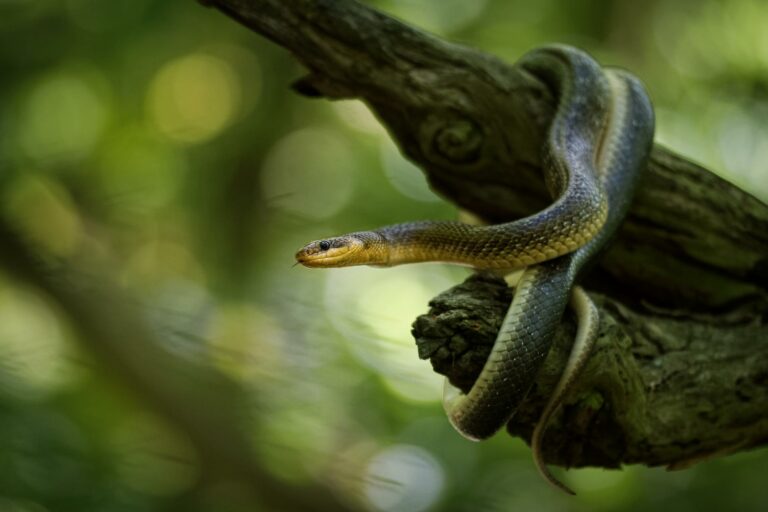Zamenis longissimus

The Aesculapian snake is named after the Greek god of healing, Asclepius, and today adorns various logos and emblems in the medical field, such as pharmacies and the World Health Organization (WHO) (Hartmann 2021). With an average length of 1.40 to 1.60 meters, it is one of the largest snakes in Europe and the largest native snake species in Germany. Its coloration varies from light brown and green tones to dark gray or black. The pale edging around some scales often creates a longitudinal striped pattern. The body surface is smooth, with wedge-shaped scales on the underside that aid in climbing. The main distribution area is in the northern Mediterranean region, with only a few isolated populations found in Germany. This diurnal snake is primarily active from May to July, and its hibernation period varies between 5 and 6 months depending on the climate (Diesener 1985).
Diet: The Aesculapian snake mainly feeds on small mammals, reptiles, birds, and bird eggs (Diesener 1985, Najbar 2007).
Threat Status: The Aesculapian snake is classified as “least concern” on the IUCN Red List of Threatened Species in Europe. However, in Germany, it is already considered “highly endangered” on the national Red List.
-
Diesener G et al. (1985)Die farbigen Naturführer: Lurche und Kriechtiere, Mosaik Verlag GmbH München
-
Hartmann L (2021)Die Äskulapnatter im Taunus, Jb. Nass. Veer. Naturkde. 142, S.57-77
-
Najbar B (2007)Food habits of Zamenis longissimus (Laurenti, 1768) (Reptilia: Serpentes: Colubridae) in Bieszczady (south-eastern Poland), Vertebrate Zoology 75 (1), S. 73-77